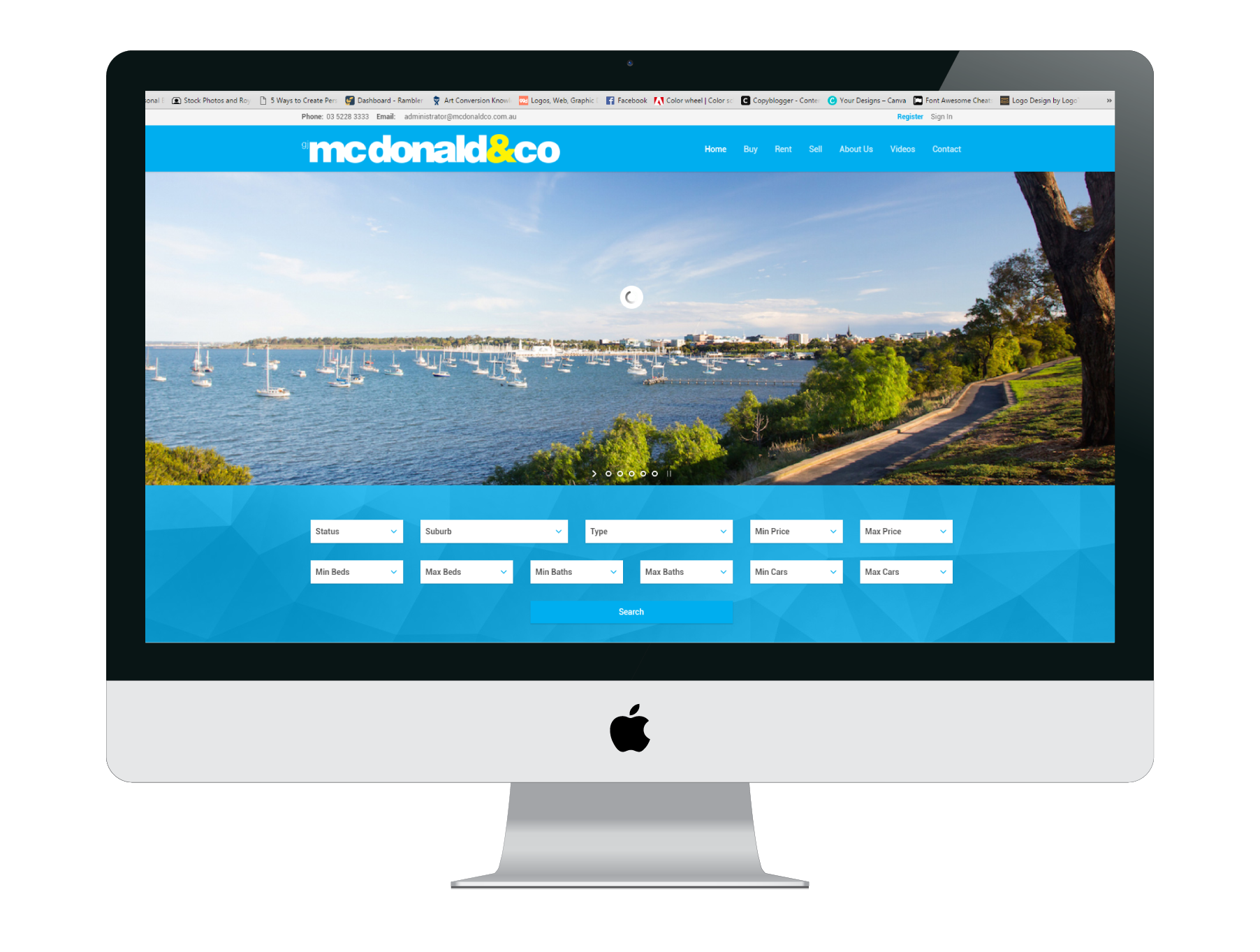 If you are having problems regarding blogging, you may be considering giving up. While walking away from blogging may seem easy to do, you need to continue blogging so you can improve website traffic and gain leads who will trust your skills. You can then convert those leads into paying customers. So, to sum it up, you have to blog if you want to improve business.
If you are having problems regarding blogging, you may be considering giving up. While walking away from blogging may seem easy to do, you need to continue blogging so you can improve website traffic and gain leads who will trust your skills. You can then convert those leads into paying customers. So, to sum it up, you have to blog if you want to improve business.
According to the 2015 report of the National Association of Realtors’ Home Buyer and Seller Generational Trends, about 12% of home buyers said that they looked online to get the information they wanted about the home buying process before they made any other moves. When it came to millennials, that figure increased to 17%.
About 70% of consumers indicate that they like getting to know a company by reading articles and information rather than through advertising. The top real estate agents ensure that their real estate blogs are given the number one priority for making their online presence stronger.
Still not convinced that blogging is for you? Check out our article Real Estate Blogging – Why You Should Do It.
Instead of thinking of blogging as a life-altering trek up a mountain. Instead, think of it as a beneficial adventure. Here we will give you a guide on how to write effective real estate blog posts in a simple way that will help you create a compelling website. When you go about blog posts the right way, you can benefit greatly from them.
Step 1
Organising your realty blogs in an efficient and effective manner. You need to organise your blogs so people will be interested. There are two basic approaches to this. You write about what you are about or what your clients and leads care about. You can address both these things in a single post when done properly.
Step 2
You need to properly focus your post. Make it unique, and if you have used the topic before you can hyper-focus on specific areas. Use a title that will spark interest and draw in readers as well.
Step 3
Make sure the goal of your post is well-established and understood so those visiting your website will know what to expect. Be able to fill in the blank when you ask what your readers will be able to know or do at the end of the post. Struggling to come up with blogging content ideas? Read our 20 Time Save Real Estate Blog Topic Ideas.
Step 4
Ask yourself what and how much you really know about a given topic. Choose subjects with which you are familiar because you want to show off your skills and talents. Give readers a glimpse of your expertise. Providing your readers with value is important, so give our article on How to Provide Value On Your Real Estate Blog a read.
Step 5
Consider if you need to do additional research. Is it necessary for you to learn more about a topic so you are better prepared to write about it?
Step 6
After you have properly prepared yourself to write the post and you have done adequate research, you need to decide what information you are wanting to bring into the post.
Step 7
Now you have the topic decided and you have determined what information you want to include in the post, you should clearly establish what you want to use as the main points in your article.
Step 8
At this point, you are trying to determine what is the perfect length for your blog post. There is not a cookie cutter approach for blog posts, so you should write enough to be helpful but not go overboard to make it too exhausting to read. Not sure what the perfect length is? Take a look at our post on The Right Size Blog Posts for Content Market Purposes.
Step 9
Keywords! That word can be dreaded sometimes. If you are going to write a blog post you need to use the right keywords so people can find your post. Keywords should be relevant to the given topic, focus on short-tail and long-tail terms relating to the subject, and choose words with a significant search volume so you know users will be searching for it.
Step 10
Include visuals. Visuals make a blog post more attractive and more appealing. Choose a cover image for the top of the post and to show up predominantly on social media. You may want to include videos, diagrams, infographics, and body images. Selecting the right image for your blog posts is important so don’t forget to check out our help guide on How to Select the Right Social Media Images for Your Content.
Step 11
Determine if your post will include a downloadable resource like a buyer’s guide, moving checklist, guide for sellers, or something helpful like that. A freebie will increase blog engagement and get visitors coming back time and time again.
Step 12
Don’t finalise your post title until after you have completed everything else. That way, you will have the perfect title that will catch interest. Use an eye-catching title, include a keyword, and speak directly to your targeted audience.
Do You Really Have to Blog? Let’s Talk About Blogging and the Effect it has on Your Business.
Now you have everything in order and your blog post is complete, go over it to see what needs to be tweaked or rewritten. Spend the needed extra time to make your post stand out and generate more traffic. When it comes to a blog post, you want it to be as close to perfect as possible. This could be the first impression some people get of you.
Check out our blog for more helpful tips and information. You can also follow us on Facebook.
At iProperty, we provide leading online property management and real estate software, responsive websites, and more.



 G.J McDonald & Co originally had their website provided by
G.J McDonald & Co originally had their website provided by 


 If you are writing blog posts or updates for your organisation every week, you want to know what length is right for your posts so you can get the most interactions, views and likes from your audience.
If you are writing blog posts or updates for your organisation every week, you want to know what length is right for your posts so you can get the most interactions, views and likes from your audience.
 In today’s technologically advanced world, the workplace has changed. It emphasises fun, a relaxed environment and the desire to be laid back and cool. As businesses tend to move toward more casual atmospheres and less rigid structuring, the line between professional and personal conduct becomes thinner and thinner.
In today’s technologically advanced world, the workplace has changed. It emphasises fun, a relaxed environment and the desire to be laid back and cool. As businesses tend to move toward more casual atmospheres and less rigid structuring, the line between professional and personal conduct becomes thinner and thinner.
 Many states have new underquoting reforms coming into effect, so agents may find themselves in a greater challenge and more stressed when it comes to determining an estimation for property value. If your property value estimation is not near the value the vendor is wanting, you could find your job jeopardised. However, if the estimation is too high, you could find yourself in an awkward spot with the vendor and the buyer both when the day for the auction arrives.
Many states have new underquoting reforms coming into effect, so agents may find themselves in a greater challenge and more stressed when it comes to determining an estimation for property value. If your property value estimation is not near the value the vendor is wanting, you could find your job jeopardised. However, if the estimation is too high, you could find yourself in an awkward spot with the vendor and the buyer both when the day for the auction arrives.
 A newer but popular term, social selling is more popular now than ever. While the term is well-known, few people may comprehend what it actually requires to implement a social media program for an organisation. This kind of program is about using social media to develop or to even nurture relationships while seeing a potential to convert those relationships into sales. With an effective framework, and a lot of effort, you can create a social sales plan that will be effective for your organisation.
A newer but popular term, social selling is more popular now than ever. While the term is well-known, few people may comprehend what it actually requires to implement a social media program for an organisation. This kind of program is about using social media to develop or to even nurture relationships while seeing a potential to convert those relationships into sales. With an effective framework, and a lot of effort, you can create a social sales plan that will be effective for your organisation.
 Unfortunately, past clients are untapped and go neglected in the untapped by many real estate agents. Many of your former clients will need a real estate agent anywhere from two to five more times during their lives, depending upon where your former clients are during their current stage in life. Those figures may even be more conservative than normal if those clients are renting for the first time or they are investors.
Unfortunately, past clients are untapped and go neglected in the untapped by many real estate agents. Many of your former clients will need a real estate agent anywhere from two to five more times during their lives, depending upon where your former clients are during their current stage in life. Those figures may even be more conservative than normal if those clients are renting for the first time or they are investors.
 It is imperative to have a plan devised when making outbound calls and is more important than mapping out how to handle a company’s inbound calls. When receiving inbound calls, the individual on the other side of the line is already interested in what it is that you have to offer. Since they already have an interest, they are more likely to want to hear what it is you have to say. Building a rapport with the person who called is important. Since they took the time to call, it is safe to assume they want to talk about products or services.
It is imperative to have a plan devised when making outbound calls and is more important than mapping out how to handle a company’s inbound calls. When receiving inbound calls, the individual on the other side of the line is already interested in what it is that you have to offer. Since they already have an interest, they are more likely to want to hear what it is you have to say. Building a rapport with the person who called is important. Since they took the time to call, it is safe to assume they want to talk about products or services.